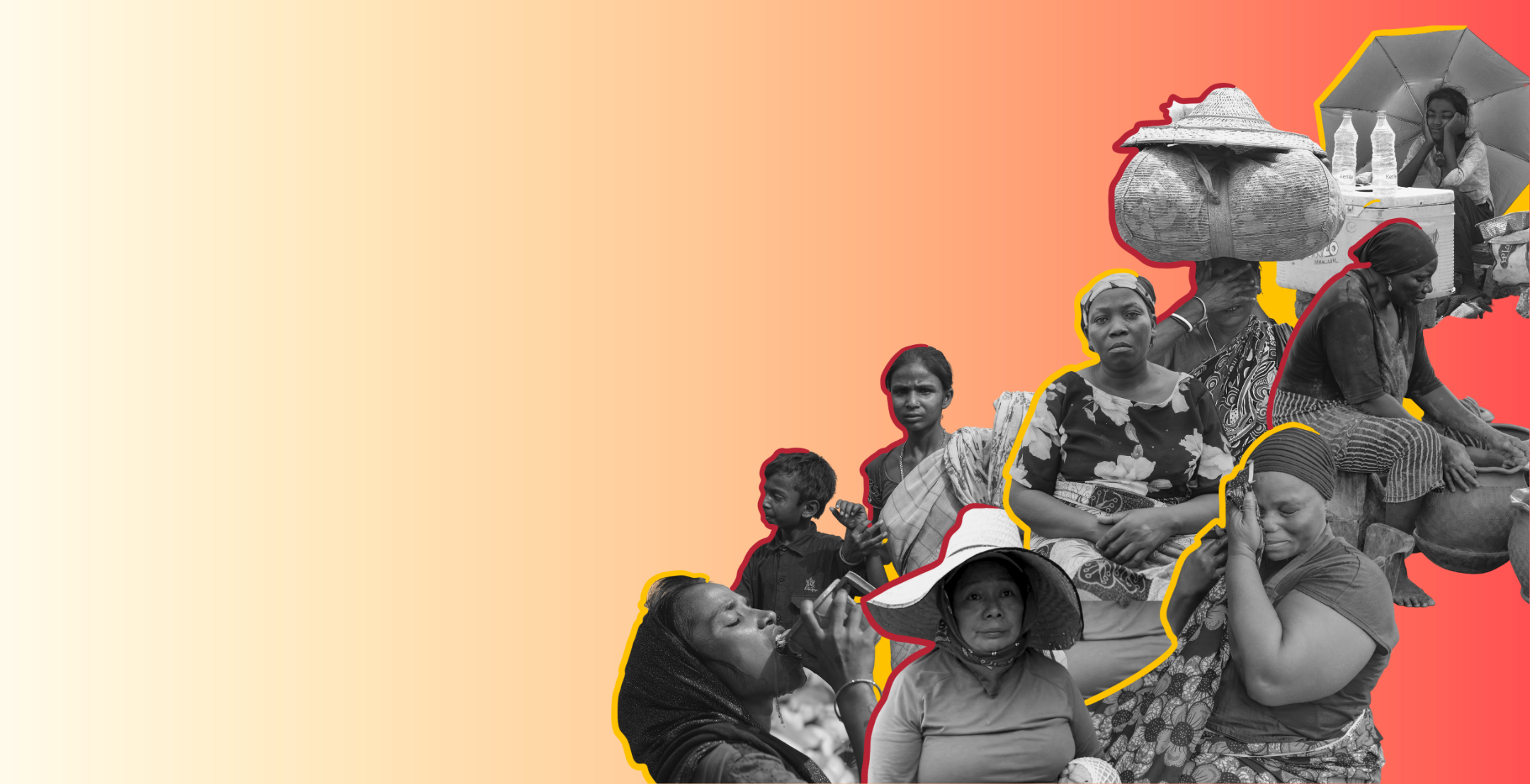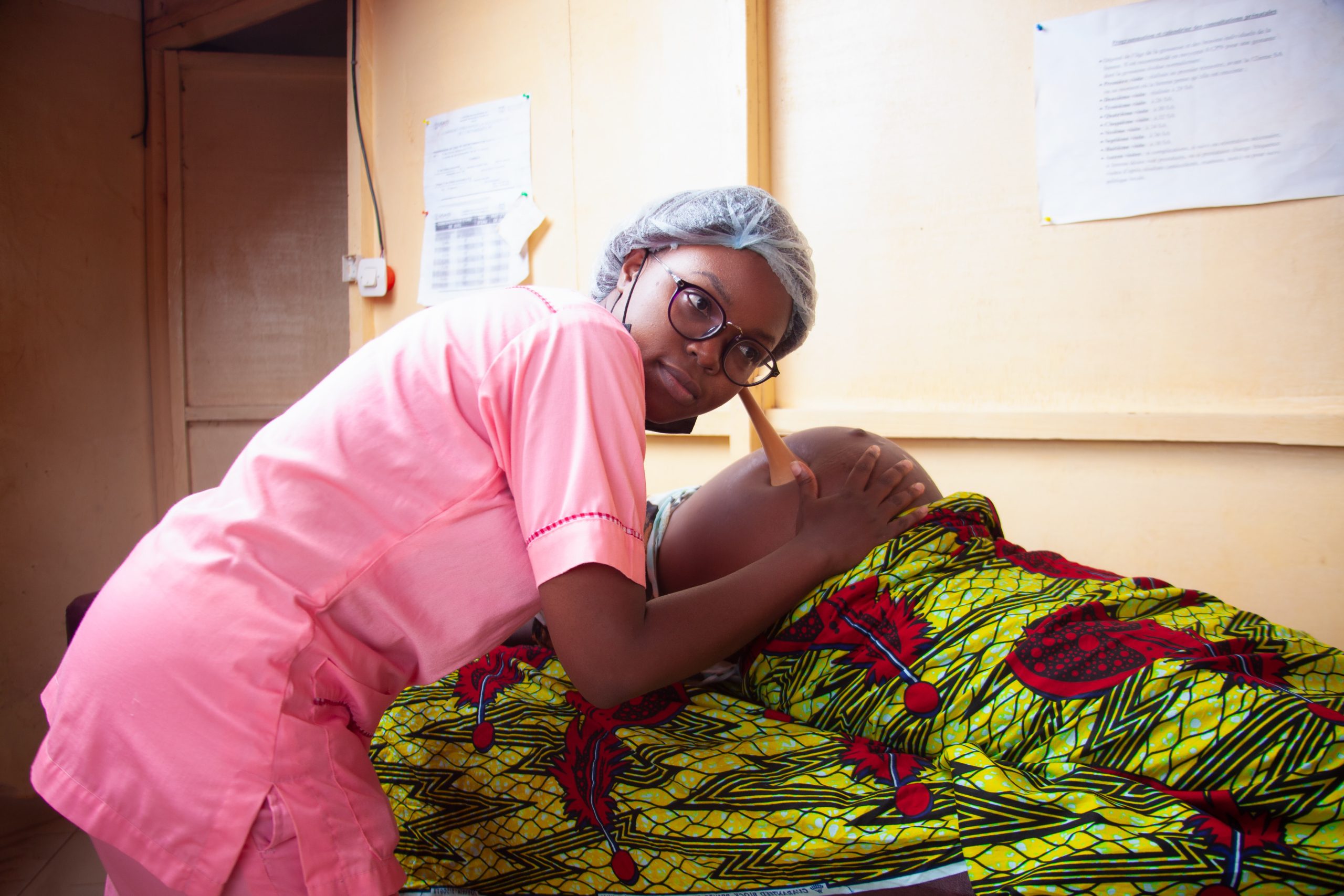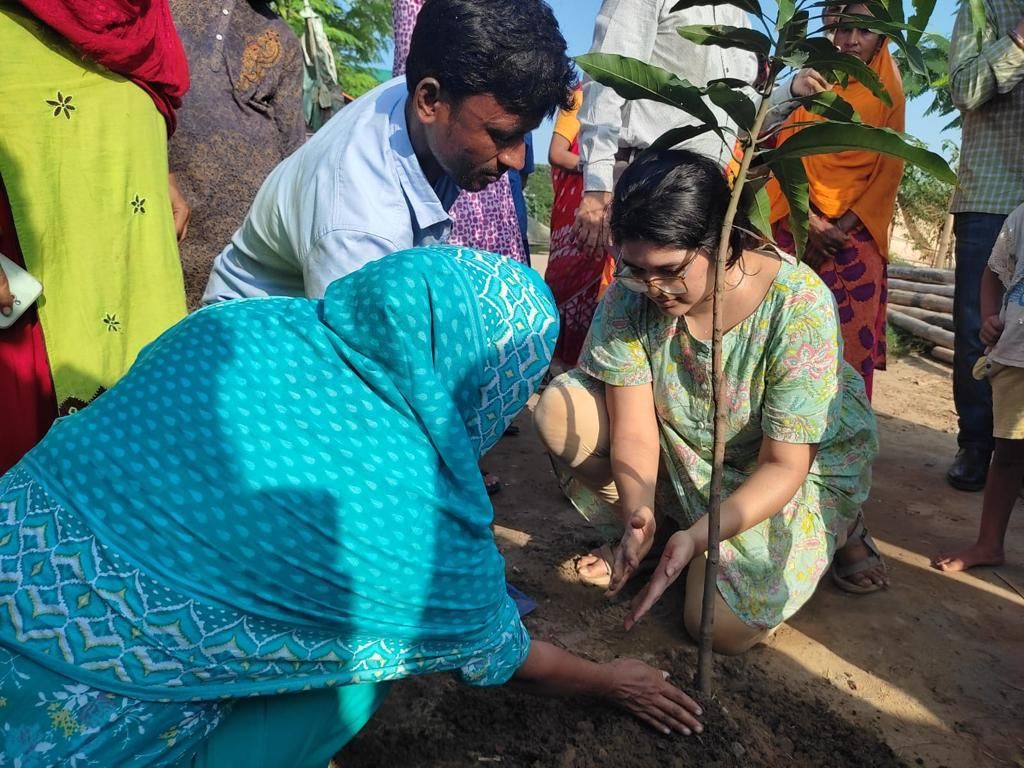Women on the frontlines of heat
The surveys informing climate resilience
By Kathleen Euler Thu, Feb 6, 2025
As the global climate crisis intensifies, vulnerable communities are facing extreme heat events that disproportionately affect women, especially in informal settlements. In Paradip, India, the city’s suffocating heat is dangerous for women living in one of the city’s twenty-five slums. Over 80 percent of the local population lives in slums without reliable access to cooling.
So, when temperatures spike, it can be deadly. During power outages, the families who have electric fans cannot even use them. When the searing heat makes people so ill that they need emergency help, their phones may not charge to call for an ambulance. Refrigerated food can spoil, and medicines that need to stay cool can become ineffective.
In informal settlements, women are the first to feel the heat, both literally and figuratively. Opportunities to respond to heat waves are heavily influenced by social and cultural norms. For example, women in informal settlements are typically expected to spend most of their days on household chores. When indoor temperatures rise, they rarely have respite. Instead, they are exposed to sweltering heat throughout the day due to poor ventilation and the construction of their homes with heat-trapping materials. At night, the risks can continue.
The ways women experience heat are distinct, and the solutions being proposed to build resilience must consider their vulnerabilities. In 2024, the Atlantic Council’s Climate Resilience Center partnered with Roof Over Our Heads, a global campaign that works to improve the climate resilience of people living in informal settlements. Together, our organizations conducted field interviews with women living in informal settlements across five countries. These interviews laid the groundwork to better understand the risks faced by women in informal settlements during heat waves and assess which solutions are most effective in fostering long-term resilience.
Challenging the data bias
Women living in informal settlements are on the frontlines of extreme heat. Yet their experiences, perspectives, and needs are often overlooked. From access to cooling resources down to biological and physiological differences, women and men have different risks and exposures. For example, “sleeping outdoors is often not an option for women and children due to safety concerns,” said one of the interviewers. While men can move outdoors to sleep, women and children remain inside to stay safe—even if it means exposure to health-threatening heat.
“The vast majority of the information we have collected globally and continue to collect has been gathered mainly from men,” explained gender expert Caroline Criado-Perez in an event hosted by the King’s Global Institute for Women’s Leadership last year. “This means that pretty much everything in the world from the car you drive to the medical treatment you receive has been designed to work mainly for men.”
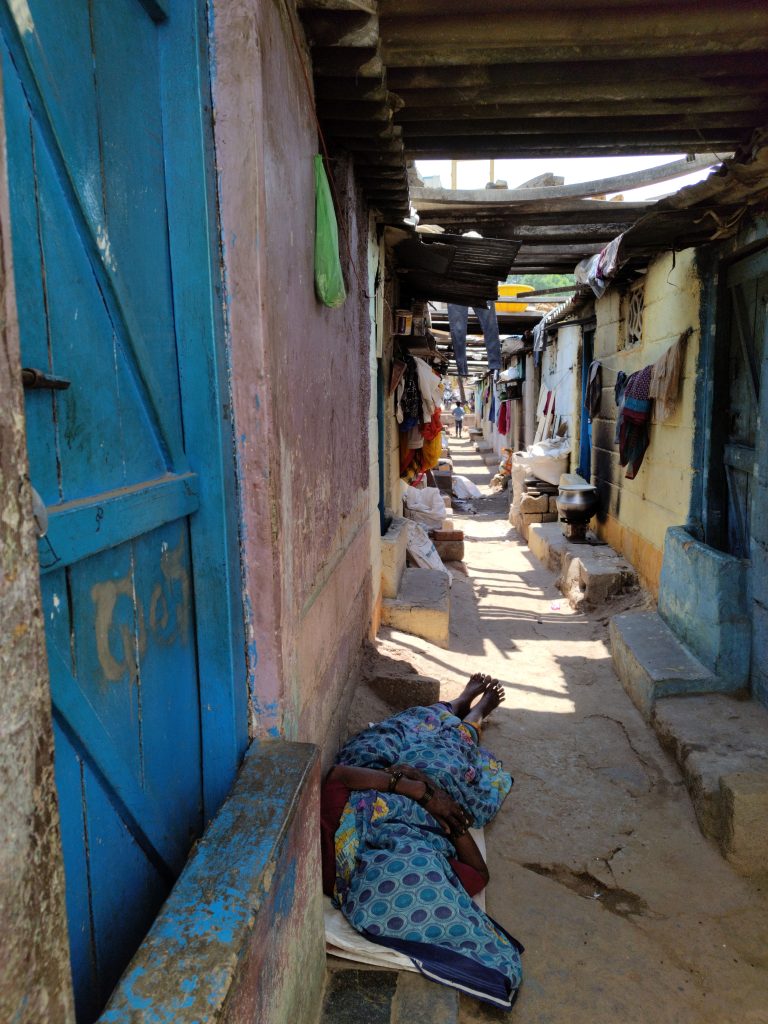
When men are treated as a gender-neutral baseline, it can lead to harmful practices that ignore women’s lived reality. For instance, the first crash test dummies overlooked one key factor: gender. They were based on the average male body, ignoring the physiological differences that can impact survival. Shockingly, this gap continues today. According to industry regulations, tests still do not require manufacturers to use female crash test dummies in the driver’s seat.
Women’s specific needs and vulnerabilities are rarely considered as they should be, even in climate resilience. Women lose more of their productive working time to heat and face specific social, economic, and even physiological risks. Women even have physically different heat tolerances that change throughout their hormonal cycles, pregnancy, and menopause. In fact, each degree Celsius increase in maternal heat exposure can increase the risk of miscarriage or stillbirth by 42 percent.
That’s why working with local partners is critical to ensure that programs respond to women’s unique needs.
Our partnership with Roof Over Our Heads
“Roof Over Our Heads has built community trust. They can have honest conversations with women on the frontlines of climate change, and then transform that data into co-created solutions that are practical, relevant, and sustainable,” says Hana Abdelatty, associate director of extreme heat initiatives at the Atlantic Council’s Climate Resilience Center. “We recognize the invaluable need to work directly with communities to learn from localized expertise.”
Abdelatty has collaborated on this initiative with the Roof Over Our Heads team since it began, alongside the Center’s Global Chief Heat Officer Eleni Myrivili. Together, the partners ensured that the interviewed women’s feedback was integrated into the research process.
“These interviews are not just about data,” says Sheela Patel, founder of the Campaign for Roof Over Our Heads. “We must create pathways for their voices to shape climate action. That is the core of our work: we do not impose solutions from above, but rather look at existing solutions that can be refined, adapted, and co-created from the ground up.”
Women in the era of global warming
Over one billion people live in informal settlements. This number is projected to triple by 2050. This has dangerous implications, since heat wave exposure is 40 percent higher in low-income populations.
However, it is women who will bear the brunt of this. Globally, women spend significantly more time indoors. They are often expected to take on a disproportionate share of domestic labor and face cultural norms that expose them to indoor heat. In informal settlements, this heat can be deadly and inescapable. Structures are often built without adequate cooling infrastructure. They are made of metal and cement sheets that trap heat, turning indoor spaces into ovens. Without windows due to shared walls and concerns about security, it becomes even more dangerous when the buildings cannot be ventilated.
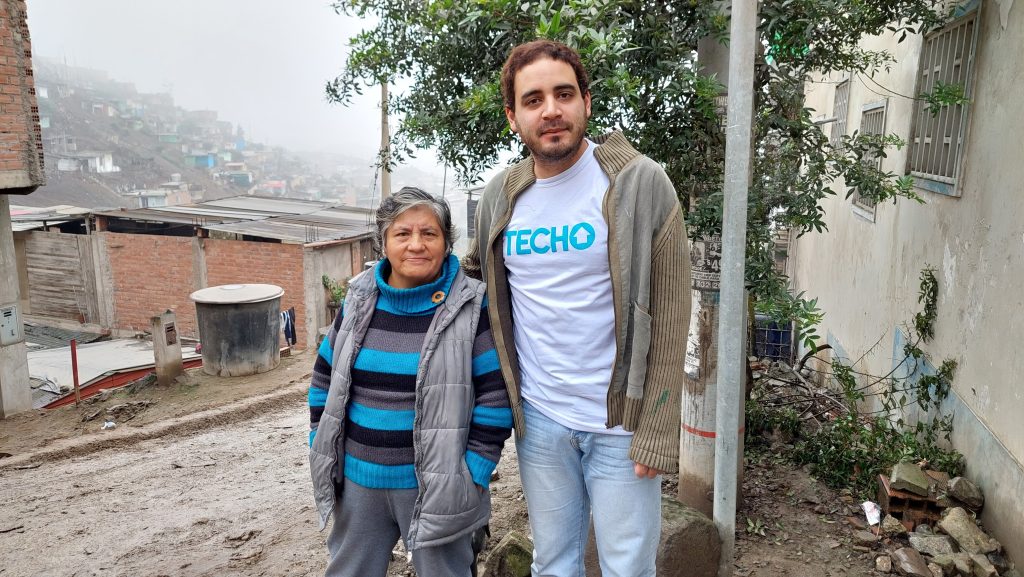
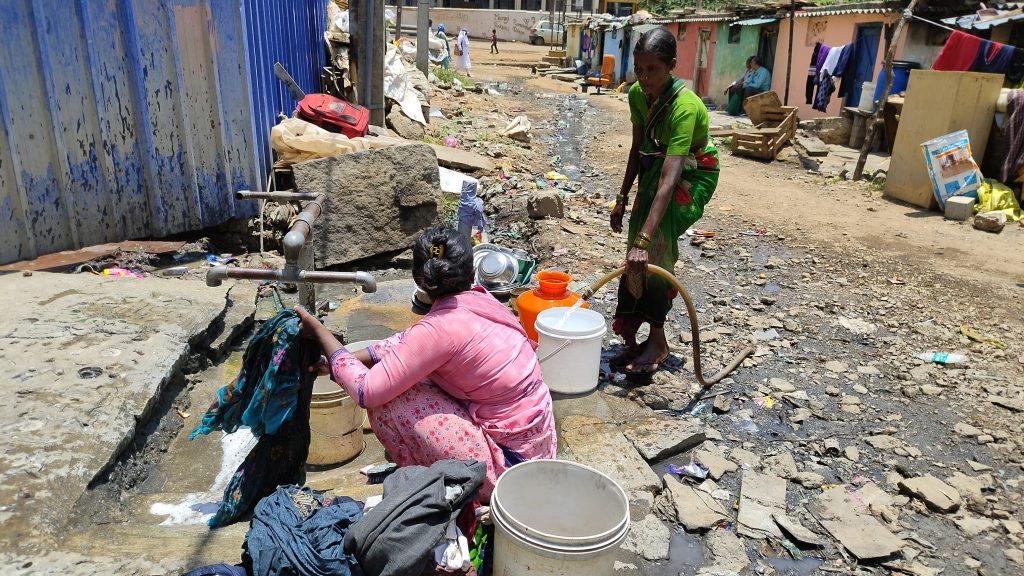
The invisible force keeping women indoors
Because of the silent nature of invisible labor, women’s exposure to heat can be dramatically underestimated. An estimated 60 percent of women experienced a rise in unpaid work during heat waves, according to a study that looked at the gendered impacts of heat in Bangladesh, India, and Nepal.
One of the women interviewed in Peru noted that the caregiving burden can extend beyond the walls of a single household. “My two neighbors work far away for their jobs. But they have no one to leave their children with, so I look after their children,” she said.
What is invisible labor?
Invisible labor refers to unpaid, undervalued, or unrecognized work often led by women. These tasks are essential but become “invisible” in part because of cultural and social norms. In many cultures, women are expected to take on a heavier load of regular tasks for families and workplaces. There is often a disproportionate share of cooking, cleaning, and childcare that falls to women. Women are estimated to spend twice as much time as men on housework and childcare.
Notably, women’s caregiving burden can extend to aging parents, neighbors, and other community members. They are not solely expected to care for their own children and dependents. Women are often a primary resource for other community members. Thus, when women’s needs are not factored into program design, this invisible labor can be completely ignored, rendering solutions ineffective. The voices of women often excluded from decision-making conversations must be heard to ensure that solutions can work.
What did the interviews reveal?
The Climate Resilience Center partnered with Roof Over Our Heads to learn how women experience heat in informal settlements. After testing, our teams decided on an interview-based approach. This enabled women to share their experiences more openly and in greater detail.
Once the survey was established, the Roof Over Our Heads and the Society for Promotion of Area Resource Centers (SPARC) teams conducted on-the-ground interviews with women living in informal settlements across India. In partnership with TECHO, a founding partner of the Roof Over Our Heads campaign, they also interviewed women living in informal settlements across Argentina, Colombia, Mexico, and Peru. These conversations provided valuable insights, including:
- All women noted that their homes were unbearably hot during heat waves.
- Most women shared that if they chose to work, they had to walk long distances in the heat.
- Over forty percent of the interviewed women disclosed that they had personally experienced severe health issues that required medical attention as a result of extreme heat.
- In India, most of the women interviewed have experienced water shortages during heat waves.
- In India, most women shared that residents—rather than government agencies—planted trees around the informal settlements to expand shade cover during heat seasons.
These takeaways highlight that despite the diversity of lived experiences, there is a sobering commonality. Women face heat from the moment they wake up until they go to sleep. Since women take on a heavier load of household management and childcare, they can also be exposed to indoor heat.
“Women often lack decision-making power even in households,” explains a representative from Roof Over Our Heads. “While cooling systems within homes may be a priority for women, men might have a different exposure or coping mechanisms since they are away from the home most of the day.”
The dangers of data gaps in climate resilience
When women are excluded from decision-making, households and cooling resources can be built without considering their unique exposure. The very materials used for buildings can trap heat, making indoor temperatures often hotter than those outdoors. In India, many interviewees highlighted this concern. “People think that because this settlement is along the canal or river, it’s cooler. But that’s not the case at all. In fact, it’s hotter along the canal. And because of the asbestos sheets, it becomes even more unbearable,” explained one interviewee from Paradip.
When women head to work, heat also strikes. Some interviewees noted that there are fewer jobs within their communities. To travel to work, many walk or take public transit in the scorching heat. In some communities, this can come with specific safety concerns. In fact, one study found that women in Southeast Asia were four times more concerned about safety on public transportation than men.
The concerns about safety also translate into more local community spaces. Women are frequently excluded from public spaces since many are predominantly occupied by men. One interviewee in Pimpri, India, said that she felt unsafe accessing a shaded outdoor space because it is often used by intoxicated men.
Solutions must always consider how women experience heat. What may work in one context could be ineffective in others. “Women repeatedly highlighted that even basic cooling measures, such as a single working fan, were inadequate,” said a representative from Roof Over Our Heads. “This insight emphasized the necessity of documenting these experiences to inform tailored, practical interventions.”
Making the invisible visible
When women’s voices are ignored, it perpetuates the crash test dummy fallacy. Women experience climate change in different ways, and those experiences must inform the solutions to those impacts. The community context and the local needs of marginalized groups must underpin every initiative.
The inherent biases of data collection are significant. However, there are concrete steps that policymakers and organizations can take to ensure their efforts are more inclusive. From vulnerability assessments to program design, community perspectives can inform more impactful programming. At each step, women’s perspectives can ensure that solutions will benefit all members of the community.
Reflecting on the design of the interviews, Abdelatty explains that listening to women’s stories was invaluable. The interviews not only documented their experiences with extreme heat, but also ensured that they felt their voices mattered. Their responses have a tangible impact on decision-making moving forward, and ensure that projects are informed by their lived realities.
By acknowledging that the risks women face from extreme heat are real, policymakers and the organizations that design climate-resilient solutions will be able to close the data gap that has too often marginalized them. As global warming accelerates and intensifies the costs of climate change, women must play a central role in the implementation and sustainability of these solutions.
In Paradip, the work being done to help women in slums is rooted in real, actionable solutions. Some solutions are straightforward, like retrofitting homes with cooler materials or providing safe drinking water at workplaces. Others require more systemic efforts, like ensuring women have access to safe, shaded public spaces. Organizations like Roof Over Our Heads are well positioned to ensure that women’s needs and voices are heard. Stories like those from Paradip are invaluable to inform a new, more inclusive way forward.
